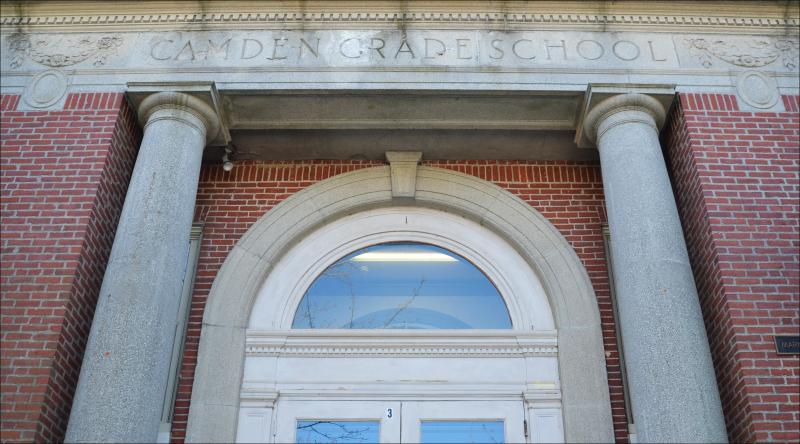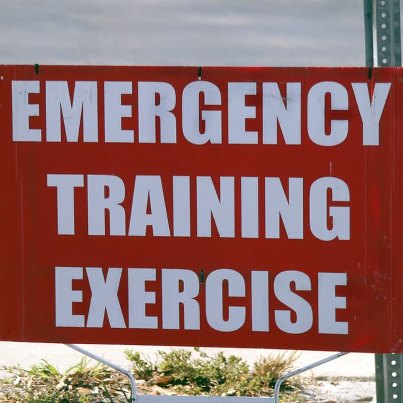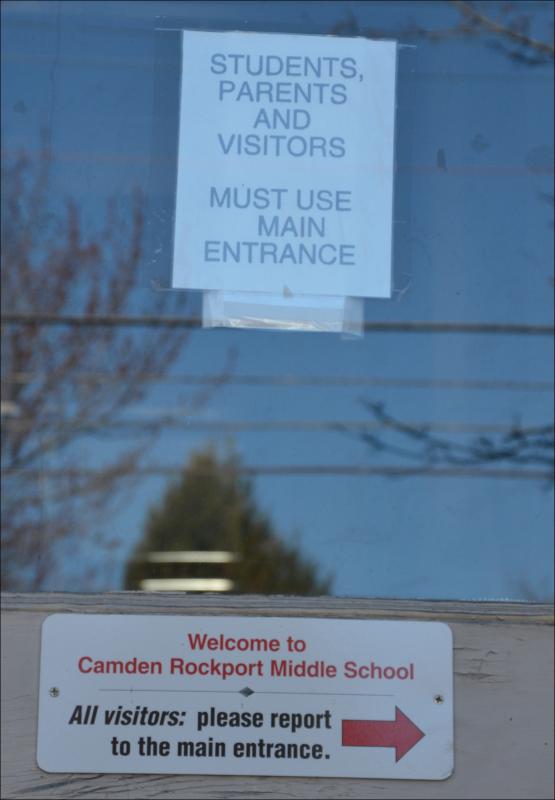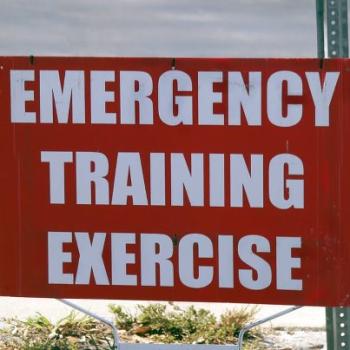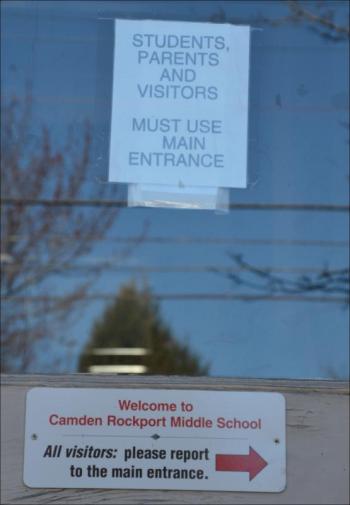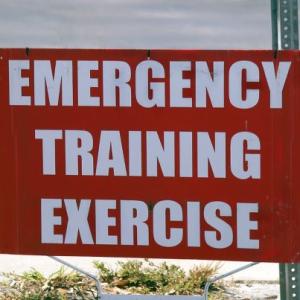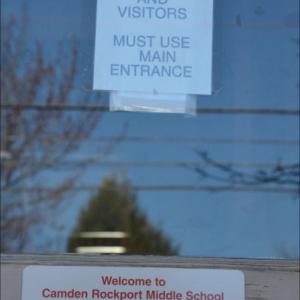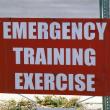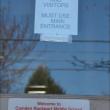Camden-Rockport police, firefighters, school principals review violence response plans
Listening to Boston's police, fire and emergency medical care on scanners throughout the afternoon of April 15 was a lesson in how we, as a society, respond to unpredictable violence on a mass scale (hear an edited 30 minutes of Police Audio: Boston Marathon Explosion). The orderly scramble by first responders following detonations of incendiary explosive devices on the city's sidewalks represented a disciplined reaction to horrific chaos. It's true that law enforcement and medical crews were already heavily present at the marathon, and hospitals were luckily nearby; but, how police, fire and EMTs — the system — immediately swung into action was strong and indicative of how local, state and federal agencies meshed together.
Parallel training for such disasters, manmade or natural, is a constant on Maine's Midcoast, though it takes place quietly in meeting rooms and conversations. It is not something that citizens want to talk about much; yet, the realities of 21st-Century life dictate that circumstances can go from normal to crazy in just moments, affecting large populations.
"It is a community-wide awareness," said Elaine Nutter, superintendent of two school districts, SAD 28 (Camden and Rockport K-8) and Five Town CSD (Camden Hills Regional High School, with students from Appleton, Camden, Hope, Lincolnville and Rockport). She spoke matter-of-factly about the need to prepare for the unpredictable, and how that awareness has grown from a 'maybe we should talk about it' to an ongoing conversation.
"It's not like you get together and check it off your list, like you are done," she said. "You are never done."
From Columbine (1999) to Virginia Tech (2007) to Newtown (2012), and many others over decades, even centuries, school shootings have now become constant reference points in the dialog about "ultra-violence," as it is become termed by some first responders. (The phrase comes from the novel A Clockwork Orange.)
"In a sad way, we've learned that we need to proactively respond," Nutter said. By that, she means to quickly move in on a situation. And with that push is to establish a unified command team right away. In the Midcoast, that would hypothetically happen with fire, police, first aid and school administrators immediately integrating their collective, yet specialized, knowledge about the infrastructure of a building, the dynamics of a school population, the profile of criminals, their background, weapons, etc.
Maine's Emergency Management Agency is holding an emergency preparedness conference April 23 and 24 at the Augusta Civic Center in Augusta. The conference invites first responders, government officials, educators, health and human service providers, churches and others to talk about incident response and recovery. This year, the focus is on 2012, in particular the Sandy Hook Elementary School shootings in Newtown, Conn., as well as Maine's contribution to Superstorm Sandy recovery in New York and New Jersey.
On April 11, Camden's Police Chief Randy Gagne, along with Camden and Hope fire chiefs Chris Farley and Clarence Keller, drove to Dover, N.H., to listen to a Columbine school shooting first responder talk about how communities react effectively to ultra-violence. Approximately 400 sat in the audience, including chool administrators, to hear about about that seminal disaster that has since shaped how schools and universities react to violence.
Last November, police, fire and emergency responders gathered with Nutter and school principals to review emergency plans for the schools. Those plans are required by law, according by Nutter.
"They came in and reviewed our plans, scenario by scenario, and gave us feedback," she said. "As a state, our schools are in good shape because we paid attention to that."
Six weeks ago, the schools again met with fire, police, a sheriff's deputy and ambulance personnel, running tabletop exercises that played various events.
"Chris [Farley, Camden Fire Chief] was instrumental in that," said Nutter. "We problem-solved by what we do in different situations."
Those situations ranged from storms dropping trees on school buildings to incidents springing from child custody battles to gun violence.
"I don't think you're ever prepared for a school shooting," said Farley. "It becomes what do you do when it happens. Columbine was not prepared. Now, local law enforcement trains to deal with active school shooter situations. Locally, we are following best practices suggested by the International Association of Fire Chiefs, Federal Bureau of Investigations, Fraternal Order of Police, International Association of Chiefs of Police and Homeland Security."
Those best practices emerged from an April 2 meeting of the organizations in Alexandria, Va., where first responders talked about methods of better integrating, coordinating and improving responses to mass casualty shootings. The topic was “Responding to Mass Casualty Shootings — Strengthening Fire/Law Enforcement/EMS Partnerships.”
Conversations there endorsed:
Raising awareness on differences in response protocols within the first responder community;
Integrating planning, and training efforts as well as practical exercises across disciplines;
Using National Incident Management System/Incident Command System as the platform for all state and local incident response efforts. Homeland Security created NIMS following Sept. 11, 2001 as an all-hazards approach to managing incidents.
Increasing communication interoperability to ensure an integrated response;
Understanding the value of aggressively responding to active-shooter incidents; and,
Making sure all first responders have the best equipment available.
In Boston, first responders, along with bomb-sniffing dogs, spent the afternoon inspecting unattended bags, suspicious vehicles and individuals, as the injured were raced to hospitals. A command center was set up in a hotel, overseeing a web of emergency response and criminal investigations. Boston's well-oiled machine coped efficiently with an unpredictable event, but its collective intense focus did not come by happenstance; its infrastructure relied on training, on exercises, on systematic thought.
And the approach has changed. Now, there is unified attempt to 'go in' immediately to any event. Coupled with that proactive push is the instananeous establishment of a unified command. That happened in Boston, with different agencies gathering with the governor. In the Midcoast, that would hypothetically happen with fire, police, first aid and school administrators, where their collective knowledge would synthesize into a well-oiled response.
Some preparedness comes with plain common sense, such as ensuring that one key unlocks all school doors.
This small yet relevant upgrade was accomplished in 2009 at the Camden-Rockport Middle School, when Principal Maria Libby began developing guidelines for locking down the school.
"She had the whole school rekeyed so we don't need to fumble around for keys," said Farley.
There are also reasons why visitors to the schools check in at the front desk.
The exercises and ongoing attention to ultra-violent incidents or natural disasters as they strike schools and other public places continues.
Principals at Camden-Rockport Elementary and Middle schools, as well as at Camden Hills Regional High School, will meet again with law enforcement in Camden and Rockport, working on lockdown scenarios.
Nutter said what she has learned most from the conversations with first responders is how to cope with rapidly changing circumstances.
"The changing dynamics of any situation and how to respond to them is key," she said.
Nutter has invited parents into the conversation, as well, in an open letter she wrote to them in March:
Parent Input to School Safety
Dear Parents and Friends:
I trust that it is apparent from what you see on a regular basis that all of us in SAD 28 and Fivetown CSD take student safety very seriously. I would like to take this opportunity to briefly outline some of the actions that we take to continually maintain and monitor preparedness. I would also like to invite you to forward to me your ideas to improve school safety.
Each school has an Emergency Plan that outlines different types of crisis situations and how we would respond to each. This plan is updated annually at the beginning of the school year. This fall, we took the additional step of inviting police and fire departments of both Camden and Rockport to meet with administrators to make recommendations to our plan. We are in the process of setting up an additional training, where the police departments provide scenarios for us, and each school plans a response. The first responders will then critique each school's response.
Sometimes we are asked for specifics in the Emergency Plans. I think you will understand that publicly sharing the details of the plans would compromise their effectiveness and potentially compromise student safety. I can tell you that informing parents is part of every contingency, with people specifically assigned to inform and work with parents and the public.
You probably know that each school participates in a variety of drills during the year, including evacuation, stay put, and lock down. Students also participate in bus drills.
While we are very conscious of student safety and preparedness, we also recognize that parents and community members have a fresh set of eyes and perspective that is valuable to our planning. At the February SAD Board meeting, community members participated in a discussion of safety issues with the School Board and administrators. In order to gain further input, I invite you to give suggestions and recommendations directly to me at the Office of the Superintendent: Elaine_Nutter@fivetowns.net or 7 Lions Lane, Camden, Maine 04843. Your suggestions will be carefully considered.
Editorial Director Lynda Clancy can be reached at lyndaclancy@penbaypilot.com; 706-6657
Event Date
Address
United States

